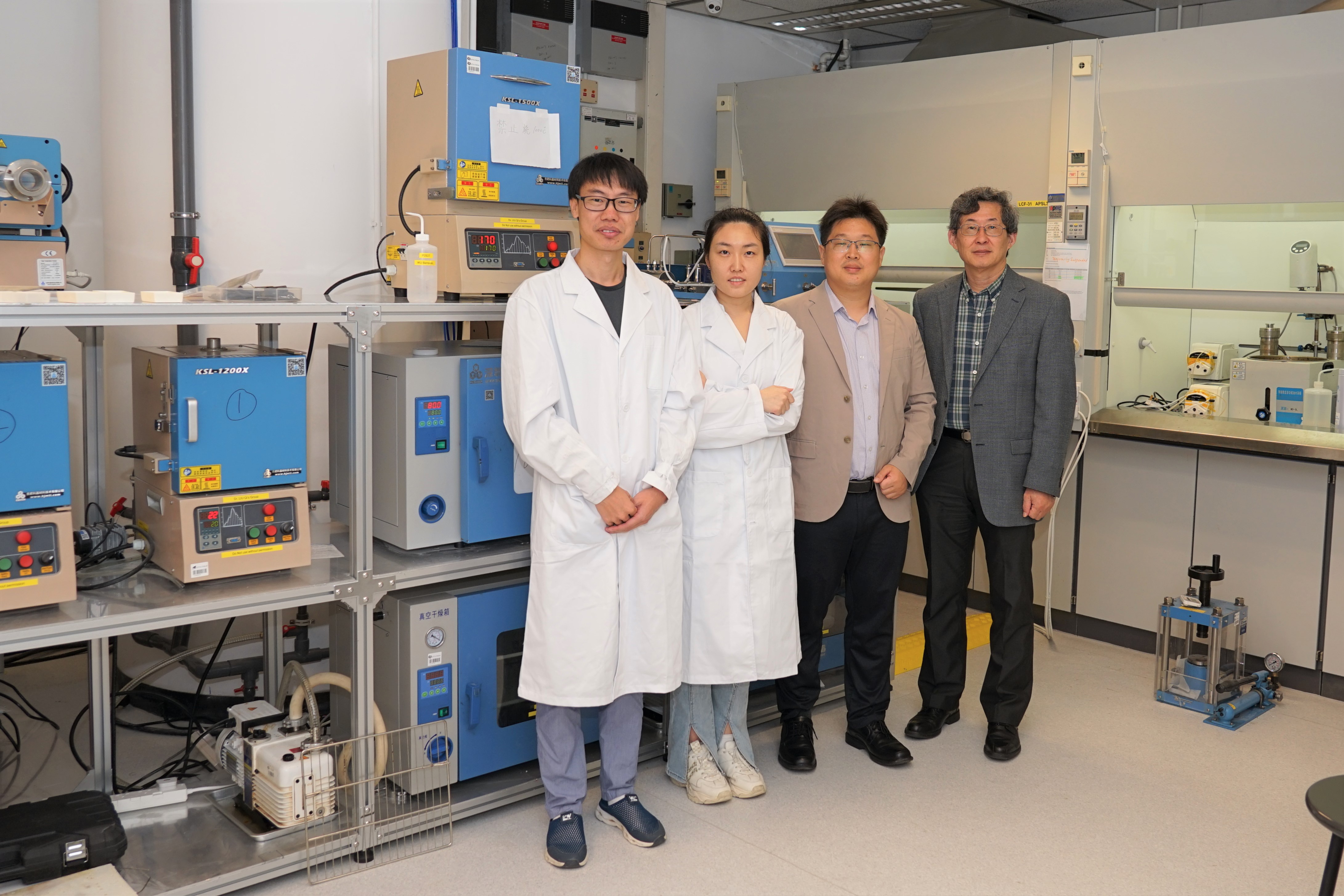Novel Cathode Material with Negligible Voltage Decay for Future Lithium-ion batteries

Sponsored by

Sponsored by


Professor Qi Liu (second from the right), Yang Ren (first from the right) and their research team members.
Lithium-ion batteries (LIBs) are crucial in renewable energy storage and are the fastest-growing technology in this field, with cathode materials being vital in optimizing energy density. Among this class of materials, lithium- and manganese-rich (LMR) layered oxides with high capacity and low cost are promising cathodes for the next-generation Li-ion batteries. However, substantial voltage decay during cycling is still an obstacle to their practical deployment. Recently, researchers from City University of Hong Kong (CityU), Northwestern University, and the Argonne National Laboratory in the US jointly reported a cobalt-free LMR Li-ion battery cathode with negligible voltage decay, which opens an avenue to developing next-generation high-energy cathode materials.
LMRs are promising cathode materials due to their ability to employ both cationic (positively charged ion) and anionic (negatively charged ion) redox reactions, significantly increasing energy density. However, the voltage decay issue during cycling, which is the biggest obstacle to its commercialization, has not been resolved. This not only eventually leads to a decrease in energy density, but also poses a challenge to the battery management system.
The root cause of the voltage decay is related to the instability of the honeycomb structure of the material (Li2MnO3) and the oxygen release at high voltage. Herein, the research team led by Professor Qi Liu, Associate Professor from CityU’s Department of Physics, has designed and successfully prepared an LMR cathode material with transition metal (TM) ions occupying the interlayer Li sites of Li2MnO3. Taking advantage of the special O2-stacked atomic arrangement, these TM ions served as a “cap” to pin the oxygen ions around the honeycomb Li. Benefiting from the special structure, the LMR material exhibits negligible voltage decay upon cycling. This facilitates the commercialization process of this newly designed cathodes with high energy densities.
Designing the LMR cathode without voltage decay focused on stabilizing the honeycomb structure by a local atomistic modification to create a TM-pinned honeycomb. The capped-honeycomb local structure is built by introducing an optimal “overdose” of TM-carbonates, into the initial P2 precursors.
Their synthesized LMR cathodes exhibited an initial discharge capacity of 254.4 mAh/g with an energy density of 836 Wh/kg, which has increased by 20-30% compared to a commercial NCM622 cathode. Most importantly, it exhibited negligible voltage decay after cycling 50 times (~0.02 mV per cycle), while the typical voltage fading value for LMR cathodes reported in the literatures is usually about 1 mV per cycle, and the best one is still as large as 0.45 mV per cycle.
By introducing this innovative method, Professor Liu’s team hopes to directly promote the industrialization of lithium-rich cathode materials, thereby contributing to high energy density lithium-ion batteries.
The findings were published in the scientific journal Nature Energy titled " A Li-Rich Layered Oxide Cathode with Negligible Voltage Decay ".
Professor Qi Liu, Yang Ren, Wenquan Lu, and Christopher M. Wolverton are the corresponding authors of the research. The co-first authors are Dr. Dong Luo, Dr. He Zhu, and Ms Zijia Yin from CityU, and Dr. Yi Xia from Northwestern University. The research work conducted at CityU was supported by the National Key R&D Program of China, the Shenzhen Science and Technology Innovation Commission, and the ECS scheme.
Find out more about the Department of Physics at the City University of Hong Kong.